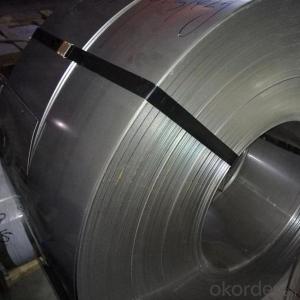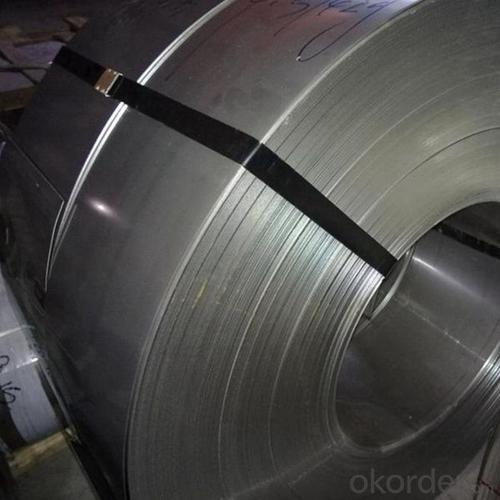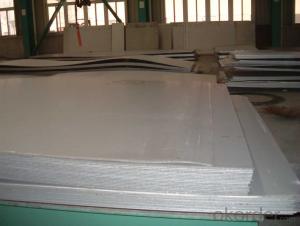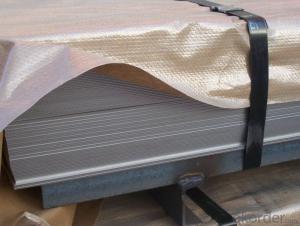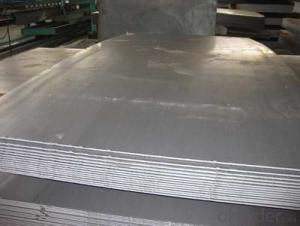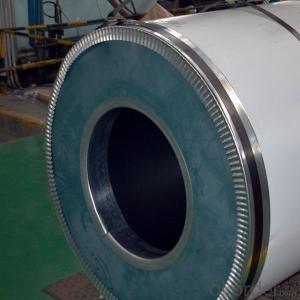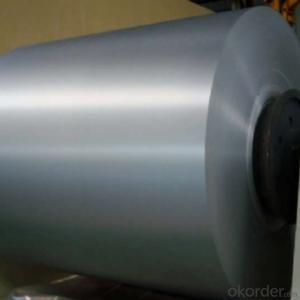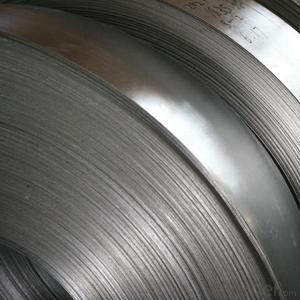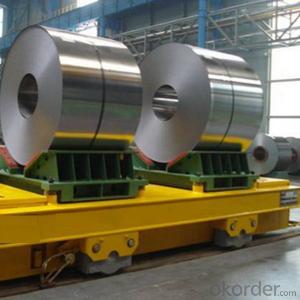Cold Rolled Steel Coils Quality Steel Coils NO.2B Finish Steel Coils Made In China
- Loading Port:
- Tianjin
- Payment Terms:
- TT OR LC
- Min Order Qty:
- 22 m.t.
- Supply Capability:
- 20000 m.t./month
OKorder Service Pledge
OKorder Financial Service
You Might Also Like
Specification
Products Description for Stainless Steel Coils/Sheets:
Article | 304 cold rolled stainless steel coil |
Surface | 2b, No.1 |
type | coil |
Thickness | 0.3-8mm |
Usage | construction, machine building, container manufaturing, shipbuilding, chemical industry, kitchen decoration |
Parking | kraft paper wooden packing or as your requirement |
Payment | Small quantity (within total $2000.00) T/T at sight, 30% in advance , 70% after receiving the B/L copy. Large quantity L/C at sight. |
Delivery Time | 30-40 days after received the deposit |
Detail picture for Stainless Steel Coils/Sheets
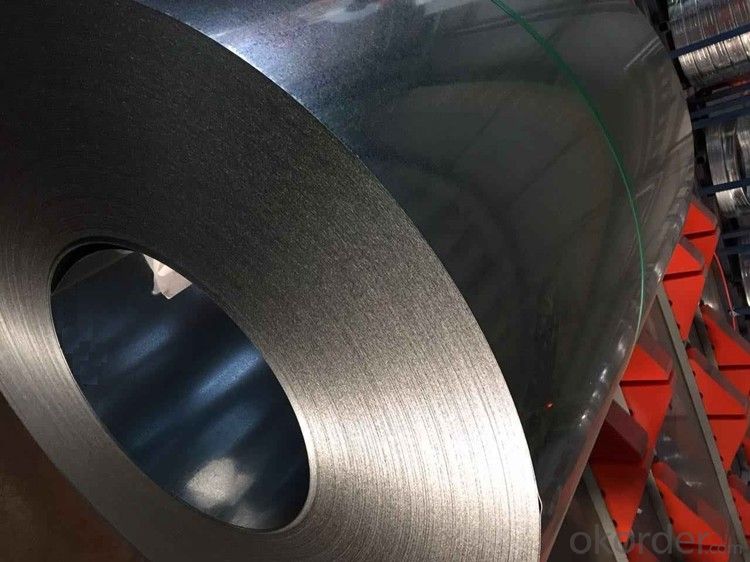
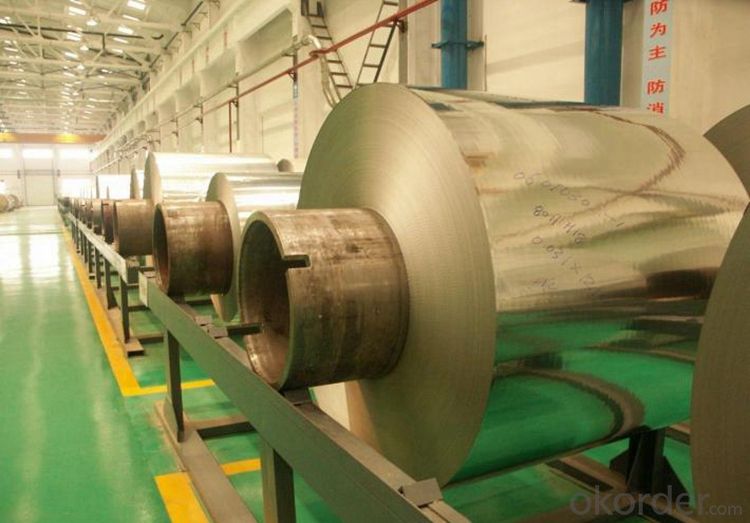

Specifications for Stainless Steel Coils/Sheets:
Grade | C ≤ | Si ≤ | Mn ≤ | P ≤ | S ≤ | Ni ≤ | Cr ≤ |
201 | 0.12 | 0.75 | 7.00 | 0.045 | 0.045 | 1.00-1.28 | 13.70-15.70 |
202 | 0.15 | 1.00 | 2.25 | 0.045 | 0.045 | 4.07-4.17 | 14.00-16.00 |
304 | 0.08 | 0.75 | 2.00 | 0.045 | 0.03 | 8.00-11.00 | 18.00-20.00 |
304L | 0.035 | 0.75 | 2.00 | 0.045 | 0.03 | 8.00-13.00 | 18.00-20.00 |
309 | 0.15 | 0.75 | 2.00 | 0.045 | 0.03 | 12.00-15.00 | 22.00-24.00 |
310S | 0.08 | 1.50 | 2.00 | 0.045 | 0.03 | 19.00-22.00 | 24.00-26.00 |
316 | 0.08 | 1.00 | 2.00 | 0.045 | 0.03 | 10.00-14.00 | 16.00-18.00 |
316L | 0.035 | 0.75 | 2.00 | 0.045 | 0.03 | 10.00-15.00 | 16.00-18.00 |
321 | 0.04-0.10 | 0.75 | 2.00 | 0.045 | 0.03 | 9.00-13.00 | 17.00-20.00 |
405 | 0.08 | 0.75 | 1.00 | 0.045 | 0.03 | 0.06 | 11.5-13.5 |
409 | 0.089 | 1.00 | 1.00 | 0.045 | 0.05 | 0.06 | 10.50-11.75 |
410 | 0.15 | 0.75 | 1.00 | 0.045 | 0.03 | 0.06 | 11.5-13.5 |
420 | 0.16-0.25 | 1.00 | 1.00 | 0.040 | 0.03 | 0.06 | 12.00-14.00 |
430 | 0.12 | 0.75 | 1.00 | 0.045 | 0.03 | 0.06 | 16.00-18.00 |
Application for Stainless Steel Coils/Sheets
Finish | Definition | Application |
2B | Those finished, after cold rolling, by heat treatment, pickling or other equivalent treatment and lastly by cold rolling to given appropriate luster. | Medical equipment, Food industry, Construction material, Kitchen utensils. |
BA | Those processed with bright heat treatment after cold rolling. | Kitchen utensils, Electric equipment, Building construction. |
NO.3 | Those finished by polishing with No.100 to No.120 abrasives specified in JIS R6001. | Kitchen utensils, Building construction. |
NO.4 | Those finished by polishing with No.150 to No.180 abrasives specified in JIS R6001. | Kitchen utensils, Building construction, Medical equipment. |
NO.1 | The surface finished by heat treatment and pickling or processes corresponding there to after hot rolling. | Chemical tank, pipe. |
Export Markets for Stainless Steel Coils/Sheets:
Our target market is the international market. Every year we export most of products to countries like India, Pakistan, South Korea, Brazil, Australia, South Africa, Spain, Sri Lanka, Taiwan, Hong Kong, etc.
FAQ for Stainless Steel Coils/Sheets:
Q: How can I get the samples?
A: If you need some samples to test ,please pay for the transportation freight of samples and our samples are free for you.
Q: How can I get your price list?
A: Please send us your email or fax and order information – Quantity, Specification (steel type, thickness, width, surface finish), then I can send you the price list.
- Q: Are stainless steel sheets fire-resistant?
- Stainless steel sheets possess fire resistance, indeed. They are composed of a heat-resistant material, stainless steel, which can endure elevated temperatures without compromising its structural integrity. This renders it a perfect option for situations demanding fire resistance, like in the construction sector, where stainless steel sheets are frequently employed to fireproof walls, roofs, and enclosures. Moreover, stainless steel boasts a remarkable melting point, allowing it to endure intense heat without distortion or melting, thereby amplifying its fire-resistant characteristics.
- Q: What are the different types of surface protection available for stainless steel sheets?
- There are various options available for protecting stainless steel sheets from corrosion, scratches, and other damage. Each option offers different levels of protection and can be chosen based on specific needs. One commonly used method is the application of a thin, adhesive film onto the stainless steel surface. This film acts as a barrier, safeguarding the sheet from scratches, dirt, and other contaminants. Typically, this film is removed after the sheet is installed. Another popular option is PVC coating, which involves applying a thicker and more durable layer of polyvinyl chloride onto the stainless steel. This coating provides excellent corrosion resistance and is available in different colors and finishes. It can be applied through a process called powder coating. Alternatively, a layer of paint can be applied to the stainless steel surface through spray painting or electrostatic coating methods. Paint coatings not only protect against corrosion but also enhance the appearance of the sheet. Passivation is a chemical process that removes iron from the stainless steel surface, creating a protective oxide layer. This layer improves the sheet's resistance to corrosion and is commonly used in industries with aggressive environments. Electropolishing is a process that removes a thin layer of metal from the stainless steel surface, resulting in a smooth and clean finish. It not only enhances the appearance but also increases the sheet's corrosion resistance. Metal plating involves applying a thin layer of another metal, such as zinc or nickel, onto the stainless steel surface. This provides sacrificial protection, as the plated metal corrodes instead of the underlying stainless steel. Metal plating is commonly used in outdoor applications exposed to harsh environments. When selecting the appropriate surface protection method, it is crucial to consider factors such as the environment, intended use, and aesthetic preferences. These factors will help determine the most suitable option for protecting the stainless steel sheet.
- Q: What is the composition of stainless steel sheets?
- Comprised mainly of iron, chromium, and other elements like nickel, manganese, and carbon, stainless steel sheets possess exceptional strength and durability. Iron, being the primary constituent, imparts resilience and sturdiness to these sheets, whereas chromium is incorporated to enhance their resistance against corrosion. By adding nickel, the sheets' ability to withstand high temperatures is bolstered, along with an improvement in their overall mechanical properties. Manganese is introduced to augment their malleability, while carbon contributes to elevating their hardness. The harmonious collaboration of these elements results in a versatile and remarkably dependable material that finds extensive application across diverse industries, including construction, automotive, and manufacturing.
- Q: How are stainless steel sheets produced?
- Stainless steel sheets are produced through a process called hot rolling, where stainless steel ingots are heated and passed through a series of rollers to reduce their thickness and improve their surface finish. This continuous rolling process creates long sheets of stainless steel, which are then cooled and cut into desired lengths. The sheets may undergo further processing, such as annealing or surface treatment, before being packaged and shipped for various applications.
- Q: What is the tensile strength of stainless steel sheets?
- The tensile strength of stainless steel sheets varies depending on the specific grade and thickness of the material. Generally, stainless steel sheets have a high tensile strength compared to other materials. For example, common grades such as 304 and 316 stainless steel sheets typically have tensile strengths ranging from 515 to 690 megapascals (MPa) or 74,800 to 100,000 pounds per square inch (psi). However, it is important to note that different grades and thicknesses of stainless steel sheets may have different tensile strength values. It is always recommended to consult the manufacturer or supplier for precise information on the tensile strength of specific stainless steel sheets.
- Q: Can stainless steel sheets be used for exterior cladding?
- Yes, stainless steel sheets can be used for exterior cladding. Stainless steel is a highly durable and corrosion-resistant material, making it suitable for various applications, including cladding. Stainless steel sheets offer excellent resistance to weathering, UV rays, and extreme temperatures, making them ideal for exterior use. They can withstand harsh environmental conditions, such as heavy rain, snow, and high winds, without deteriorating or losing their aesthetic appeal. Additionally, stainless steel sheets are available in a wide range of finishes, allowing for customization and design flexibility. Whether for residential, commercial, or industrial buildings, stainless steel cladding provides a long-lasting and visually appealing solution.
- Q: What is the thickness range for stainless steel sheets?
- The thickness range for stainless steel sheets can vary depending on the specific grade and application. Generally, stainless steel sheets are available in thicknesses ranging from 0.4mm to 6mm. However, for specialized applications, thinner or thicker sheets may be required. It is important to consult with a supplier or refer to industry standards to determine the appropriate thickness range for a specific project or application.
- Q: How do stainless steel sheets differ from regular steel sheets?
- There are several key differences between stainless steel sheets and regular steel sheets. Firstly, stainless steel is an alloy that contains a minimum of 10.5% chromium by mass. This chromium content creates a protective passive layer on the steel's surface, preventing corrosion and staining. On the other hand, regular steel sheets are prone to rust and corrosion when exposed to moisture or certain chemicals. Secondly, stainless steel sheets have superior resistance to heat and oxidation compared to regular steel sheets. This makes stainless steel an excellent choice for applications that require high temperature resistance, like industrial furnaces or automotive exhaust systems. Thirdly, stainless steel sheets have exceptional strength and durability, making them suitable for various structural and industrial uses. Regular steel sheets may have lower strength and durability, depending on their composition and manufacturing process. Moreover, stainless steel sheets have an appealing appearance due to their smooth and shiny surface. This aesthetic quality makes them a popular choice in architectural, interior design, and decorative applications. Lastly, stainless steel sheets are known for their hygienic properties. They are non-porous and easy to clean, making them commonly used in industries with strict hygiene requirements, such as food processing, pharmaceuticals, and healthcare. In conclusion, stainless steel sheets differ from regular steel sheets in terms of their corrosion resistance, heat resistance, strength, appearance, and hygiene properties. These unique characteristics make stainless steel sheets the preferred material for many industries and applications.
- Q: Are stainless steel sheets suitable for hygienic applications?
- Yes, stainless steel sheets are highly suitable for hygienic applications. Stainless steel has excellent corrosion resistance properties, making it ideal for environments that require strict cleanliness and hygiene standards. It is non-porous, which means it does not absorb liquids or harbor bacteria, making it easy to clean and maintain. Additionally, stainless steel has a smooth and polished surface, which further prevents the accumulation of dirt, grime, and bacteria. Its durability and strength make it resistant to scratches and dents, ensuring a long-lasting and hygienic surface. Stainless steel sheets are commonly used in the food and beverage industry, pharmaceutical industry, healthcare facilities, and laboratories due to their hygienic properties.
- Q: What are the different types of textured finishes available for stainless steel sheets?
- There are several types of textured finishes available for stainless steel sheets, including brushed, embossed, hammered, linen, and mirror finishes.
Send your message to us
Cold Rolled Steel Coils Quality Steel Coils NO.2B Finish Steel Coils Made In China
- Loading Port:
- Tianjin
- Payment Terms:
- TT OR LC
- Min Order Qty:
- 22 m.t.
- Supply Capability:
- 20000 m.t./month
OKorder Service Pledge
OKorder Financial Service
Similar products
Hot products
Hot Searches
Related keywords
